
- Inhibitors
- By product type
- Natural Products
- Inducing Agents
- Peptides
- Antibiotics
- Antibody-drug Conjugates(ADC)
- PROTAC
- Hydrotropic Agents
- Dyes
- By Signaling Pathways
- PI3K/Akt/mTOR
- Epigenetics
- Methylation
- Immunology & Inflammation
- Protein Tyrosine Kinase
- Angiogenesis
- Apoptosis
By research - Antibodies
- Compound Libraries
- Popular Compound Libraries
- Customize Library
- Clinical and FDA-approved Related
- Bioactive Compound Libraries
- Inhibitor Related
- Natural Product Related
- Metabolism Related
- Cell Death Related
- By Signaling Pathway
- By Disease
- Anti-infection and Antiviral Related
- Neuronal and Immunology Related
- Fragment and Covalent Related
- FDA-approved Drug Library
- FDA-approved & Passed Phase I Drug Library
- Preclinical/Clinical Compound Library
- Bioactive Compound Library-I
- Bioactive Compound Library-II
- Kinase Inhibitor Library
- Express-Pick Library
- Natural Product Library
- Human Endogenous Metabolite Compound Library
- Alkaloid Compound LibraryNew
- Angiogenesis Related compound Library
- Anti-Aging Compound Library
- Anti-alzheimer Disease Compound Library
- Antibiotics compound Library
- Anti-cancer Compound Library
- Anti-cancer Compound Library-Ⅱ
- Anti-cancer Metabolism Compound Library
- Anti-Cardiovascular Disease Compound Library
- Anti-diabetic Compound Library
- Anti-infection Compound Library
- Antioxidant Compound Library
- Anti-parasitic Compound Library
- Antiviral Compound Library
- Apoptosis Compound Library
- Autophagy Compound Library
- Calcium Channel Blocker LibraryNew
- Cambridge Cancer Compound Library
- Carbohydrate Metabolism Compound LibraryNew
- Cell Cycle compound library
- CNS-Penetrant Compound Library
- Covalent Inhibitor Library
- Cytokine Inhibitor LibraryNew
- Cytoskeletal Signaling Pathway Compound Library
- DNA Damage/DNA Repair compound Library
- Drug-like Compound Library
- Endoplasmic Reticulum Stress Compound Library
- Epigenetics Compound Library
- Exosome Secretion Related Compound LibraryNew
- FDA-approved Anticancer Drug LibraryNew
- Ferroptosis Compound Library
- Flavonoid Compound Library
- Fragment Library
- Glutamine Metabolism Compound Library
- Glycolysis Compound Library
- GPCR Compound Library
- Gut Microbial Metabolite Library
- HIF-1 Signaling Pathway Compound Library
- Highly Selective Inhibitor Library
- Histone modification compound library
- HTS Library for Drug Discovery
- Human Hormone Related Compound LibraryNew
- Human Transcription Factor Compound LibraryNew
- Immunology/Inflammation Compound Library
- Inhibitor Library
- Ion Channel Ligand Library
- JAK/STAT compound library
- Lipid Metabolism Compound LibraryNew
- Macrocyclic Compound Library
- MAPK Inhibitor Library
- Medicine Food Homology Compound Library
- Metabolism Compound Library
- Methylation Compound Library
- Mouse Metabolite Compound LibraryNew
- Natural Organic Compound Library
- Neuronal Signaling Compound Library
- NF-κB Signaling Compound Library
- Nucleoside Analogue Library
- Obesity Compound Library
- Oxidative Stress Compound LibraryNew
- Plant Extract Library
- Phenotypic Screening Library
- PI3K/Akt Inhibitor Library
- Protease Inhibitor Library
- Protein-protein Interaction Inhibitor Library
- Pyroptosis Compound Library
- Small Molecule Immuno-Oncology Compound Library
- Mitochondria-Targeted Compound LibraryNew
- Stem Cell Differentiation Compound LibraryNew
- Stem Cell Signaling Compound Library
- Natural Phenol Compound LibraryNew
- Natural Terpenoid Compound LibraryNew
- TGF-beta/Smad compound library
- Traditional Chinese Medicine Library
- Tyrosine Kinase Inhibitor Library
- Ubiquitination Compound Library
-
Cherry Picking
You can personalize your library with chemicals from within Selleck's inventory. Build the right library for your research endeavors by choosing from compounds in all of our available libraries.
Please contact us at info@selleckchem.com to customize your library.
You could select:
- Bioreagents
- qPCR
- 2x SYBR Green qPCR Master Mix
- 2x SYBR Green qPCR Master Mix(Low ROX)
- 2x SYBR Green qPCR Master Mix(High ROX)
- Protein Assay
- Protein A/G Magnetic Beads for IP
- Anti-DYKDDDDK Tag magnetic beads
- Anti-DYKDDDDK Tag Affinity Gel
- Anti-Myc magnetic beads
- Anti-HA magnetic beads
- Poly DYKDDDDK Tag Peptide lyophilized powder
- Protease Inhibitor Cocktail
- Protease Inhibitor Cocktail (EDTA-Free, 100X in DMSO)
- Phosphatase Inhibitor Cocktail (2 Tubes, 100X)
- Cell Biology
- Cell Counting Kit-8 (CCK-8)
- Animal Experiment
- Mouse Direct PCR Kit (For Genotyping)
- Featured Products
- MRTX1133
- Nab-Paclitaxel
- KP-457
- IAG933
- RMC-6236 (Daraxonrasib)
- RMC-7977
- Zoldonrasib (RMC-9805)
- GsMTx4
- Navitoclax (ABT-263)
- TSA (Trichostatin A)
- Y-27632 Dihydrochloride
- SB431542
- SB202190
- MK-2206 Dihydrochloride
- LY294002
- Alisertib (MLN8237)
- XAV-939
- CHIR-99021 (Laduviglusib)
- Bafilomycin A1 (Baf-A1)
- Thiazovivin (TZV)
- CP-673451
- Verteporfin
- DAPT
- Galunisertib (LY2157299)
- MG132
- SBE-β-CD
- Tween 80
- Bavdegalutamide (ARV-110)
- Z-VAD-FMK
- Wnt-C59 (C59)
- IWR-1-endo
- (+)-JQ1
- 3-Deazaneplanocin A (DZNep) Hydrochloride
- RepSox (E-616452)
- Erastin
- Q-VD-Oph
- Puromycin Dihydrochloride
- Cycloheximide
- Telaglenastat (CB-839)
- A-83-01
- Ceralasertib (AZD6738)
- Liproxstatin-1
- Emricasan (IDN-6556)
- PMA (Phorbol 12-myristate 13-acetate)
- Dibutyryl cAMP (Bucladesine) sodium
- Nedisertib (M3814)
- PLX5622
- IKE (Imidazole Ketone Erastin)
- STM2457
- Saruparib (AZD5305)
- New Products
- Contact Us
Anti-infection
Microbiology
- All (151)
- Anti-infection Inhibitors (32)
- Anti-infection Antagonist (1)
- Anti-infection Modulators (3)
- New Anti-infection Products
| Cat.No. | Product Name | Information | Product Use Citations | Product Validations |
|---|---|---|---|---|
| S2613 | Clorsulon | Clorsulon (MK-401,L631529) is used in the treatment of Fasciola hepatica infections in calves and sheep. | ||
| S4147 | Azithromycin Dihydrate | Azithromycin Dihydrate(CP-62993 dihydrate) is an acid stable orally administered macrolide antimicrobial drug, structurally related to erythromycin. | ||
| S4420 | Mefloquine HCl | Mefloquine HCl(Mefloquin hydrochloride) is a blood schizonticide by inhibiting hemozoin formation, used as an antimalarial drug. |
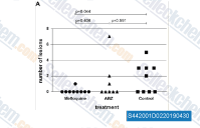
|
|
| S7896 | Sodium Tauroursodeoxycholate (TUDC) | Sodium Tauroursodeoxycholate (TUDC) is a water soluble bile salt, used for the treatment of gallstones and liver cirrhosis. | ||
| S4237 | Primaquine Diphosphate | Primaquine Diphosphate is a transmission-blocking anti-malarial clinically available, displaying a marked activity against gametocytes of all species of human malaria. | ||
| S1553 | Delafloxacin (ABT-492) | Delafloxacin (ABT-492, RX-3341, WQ-3034) is a new fluoroquinolone against 155 aerobic and 171 anaerobic pathogens. | ||
| S5397 | Chlorhexidine | Chlorhexidine is a disinfectant and topical anti-infective agent that is active against Gram-positive and Gram-negative organisms, facultative anaerobes, aerobes, and yeasts. | ||
| S2282 | Cinchonidine | Cinchonidine is an alkaloid used in asymmetric synthesis in organic chemistry. | ||
| S5967 | Berberine chloride hydrate | Berberine (Natural Yellow 18) chloride hydrate is a quaternary ammonium salt from the group of isoquinoline alkaloids. Berberine activates caspase 3 and caspase 8, cleavage of poly ADP-ribose polymerase (PARP) and the release of cytochrome c. Berberine chloride decreases the expression of c-IAP1, Bcl-2 and Bcl-XL. Berberine chloride induces apoptosis with sustained phosphorylation of JNK and p38 MAPK, as well as generation of the ROS. Berberine chloride is a dual topoisomerase I and II inhibitor. Berberine chloride is also a potential autophagy modulator. | ||
| S4192 | Chlorquinaldol | Chlorquinaldol(Chloquinan) is an antimicrobial agent used for local antisepsy. | ||
| S5961 | Prednisolone disodium phosphate | Prednisolone disodium phosphate (Hydeltrasol, Prednisolone 21-phosphate disodium) is a synthetic glucocorticoid with anti-inflammatory and immunomodulating properties that exerts late mitogenic and biphasic effects on resistant acute lymphoblastic leukemia cells. | ||
| S4759 | p-Coumaric Acid | p-Coumaric acid (4-Hydroxycinnamic acid, P-Hydroxycinnamic acid, 4-Coumaric acid, Trans-p-Coumaric acid, para-Coumaric Acid) is a hydroxy derivative of cinnamic acid found in a variety of edible plants and is reported to have antioxidant, anti-inflammatory, and antimicrobial activity. | ||
| S7411 | Ascomycin (FK520) | Ascomycin (FK520, FR 900520, Immunomycin), an FK-506 analog, is a neutral macrolide immunosuppressant that prevents rejection after an organ transplant. Phase 3. | ||
| S5927 | Proguanil | Proguanil (chlorguanide, chloroguanide) is a prophylactic antimalarial drug. It inhibits the dihydrofolate reductase of plasmodia and thereby blocks the biosynthesis of purines and pyrimidines, which are essential for DNA synthesis and cell multiplication. | ||
| S3746 | Lumefantrine | Lumefantrine (benflumetol) is an antimalarial agent used to treat acute uncomplicated malaria. | ||
| S4242 | Cetrimonium Bromide (CTAB) | Cetrimonium Bromide (CTAB) is a known component of the broad-spectrum antiseptic cetrimide, which is a mixture of different quaternary ammonium salts. | ||
| S9185 | Nitidine Chloride | Nitidine Chloride, a benzophenanthridine alkaloid found in species of the genus Zanthoxylum, has an anti-malarial activity. | ||
| S3067 | Chlorhexidine 2HCl | Chlorhexidine hydrochloride (NSC-185) is an antiseptic effective against a wide variety of gram-negative and gram-positive organisms. | ||
| S2537 | Secnidazole | Secnidazole (Flagentyl, PM 185184, RP 14539) is a nitroimidazole anti-infective. | ||
| S4195 | Broxyquinoline | Broxyquinoline (Dibromohydroxyquinoline) is an antiprotozoal agent and able to release oxygen free radicals from the water in mucous membranes. | ||
| S4196 | Ethacridine lactate monohydrate | Ethacridine lactate monohydrate(Acrinol monohydrat) is an aromatic organic compound based on acridine used as an antiseptic agent. | ||
| S4726 | Lauric Acid | Lauric Acid (dodecanoic acid, N-Dodecanoic acid, Dodecylic acid) is a saturated medium-chain fatty acid with a 12-carbon backbone. Lauric acid is found naturally in various plant and animal fats and oils, and is a major component of coconut oil and palm kernel oil. | ||
| S6288 | Chlorhexidine diacetate | Chlorhexidine diacetate (Hibitane diacetate) is a disinfectant and topical anti-infective agent used also as mouthwash to prevent oral plaque. | ||
| S4041 | Olsalazine Sodium | Olsalazine Sodium is an anti-inflammatory prodrug, which consists of two 5-ASA moieties linked by an azo bond. |
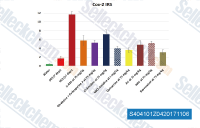
|
|
| S4172 | Cetylpyridinium Chloride | Cetylpyridinium chloride(CPC) is a cationic quaternary ammonium compound used as oropharyngeal antiseptic. | ||
| S2395 | Rheochrysidin | Rheochrysidin (Physcione) is an anthraquinone from roots of Rheum officinale Baill. |
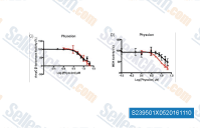
|
|
| S4081 | Sulfacetamide Sodium | Sulfacetamide Sodium is an anti-biotic. | ||
| S9387 | Maackiain | Maackiain (Demethylpterocarpin) is a pterocarpan that is widely distributed in leguminous plants. It has anticancer and antimicrobial effects. | ||
| S5096 | SulfadiMethoxine sodium | Sulfadimethoxine (Sulfadimethoxydiazine) is a long-lasting sulfonamide antimicrobial agent used to treat many infections including treatment of respiratory, urinary tract, enteric, and soft tissue infections. | ||
| S5214 | Imidocarb dipropionate | Imidocarb is an antiprotozoal agent, used as dipropionate in the treatment of babesiosis and ehrlichiosis. | ||
| S3279 | Polyphyllin B (Formosanin C) | Polyphyllin B (Formosanin C, FC), a diosgenin saponin isolated from Paris formosana, is an immunomodulator with antitumor activity. This compound induces apoptosis. | ||
| S1644 | Nitrofural | Nitrofural (Nitrofurazone) is a topical anti-infective agent with an IC50 of 22.83 ± 1.2 μM. (Rat LD50 = 590 mg/kg) | ||
| S2469 | Fleroxacin | Fleroxacin (Ro 23-6240,AM-833,Quinodis, Megalocin) is a new broad-spectrum fluoroquinolone. | ||
| S3116 | Sulfathiazole | Sulfathiazole is an organosulfur compound that has been used as a short-acting sulfa drug. | ||
| S2511 | Sulfadoxine | Sulfadoxine (Sulphadoxine) is an ultra-long-lasting sulfonamide with an IC50 of 249 μg/ml for P. vivax. | ||
| S4191 | Betamipron | Betamipron (CS-443,N-Benzoyl-β-alanine) is a chemical compound which is used together with panipenem to inhibit panipenem uptake into the renal tubule and prevent nephrotoxicity. | ||
| S2612 | Ribitol | Ribitol (Adonitol) is a crystalline pentose alcohol and is formed by the reduction of ribose which is occurs naturally in the plant Adonis vernalis. | ||
| E0525 | Colistin | Colistin(Polymyxin E), a cyclic polypeptide antibiotic synthesized by Bacillus polymyxa subspecies colistinus Koyama, exerts antimicrobial activity by targeting at the bacterial cell membrane. | ||
| S3226 | Dehydroabietic acid | Dehydroabietic acid (DAA, DHAA), a naturally occurring diterpene resin acid derived from coniferous plants such as Pinus and Picea, displays anti-inflammatory activity via suppression of Src-, Syk-, and TAK1-mediated pathways. | ||
| E8272New | Dihydroarteannuin B | Dihydroarteannuin B is a cadinane sesquiterpene isolated from the dried leaves of Artemisia annua acts as a microbial metabolite of arteannuin B. It can be used in research for developing malaria treatments. | ||
| S4945 | Ethacridine lactate | Ethacridine lactate (Acrinol) is an aromatic organic compound based on acridine used as an antiseptic agent. This compound is also a poly(ADP-ribose) glycohydrolase (PARG) inhibitor. | ||
| S9564 | p-Hydroxy-cinnamic Acid | p-Hydroxy-cinnamic Acid has in vitro antimalarial activity and in vivo anti-osteoporotic properties. | ||
| E4872 | Mefloquine | Mefloquine(Lariam, WR-142490) is a quinoline antimalarial drug and an antagonist of K+ channel (KvQT1/minK) with an IC50 of ~1 μM. It is widely used in both the treatment and prophylaxis of Plasmodium falciparum malaria, and can prolong cardiac repolarization. | ||
| S9094 | Pogostone | Pogostone is one of the secondary metabolites from Pogostemon cablin (Blanco) Benth. (Lamiaceae), serving as the effective component of the antimicrobial activity. | ||
| S3269 | Acetylcorynoline | Acetylcorynoline, a major alkaloid component derived from Corydalis bungeana which is a traditional Chinese medical herb, shows anti-inflammatory properties. This compound may decrease egl-1 expression to suppress apoptosis pathways and increase rpn5 expression to enhance the activity of proteasomes. | ||
| S3270 | Genipin 1-O-beta-D-gentiobioside | Genipin 1-O-beta-D-gentiobioside (GG, Genipin 1-β-D-gentiobioside, Genipin 1-gentiobioside, Genipin 1-β-gentiobioside, Genipin gentiobioside) is a bioactive iridoid glycoside isolated from Gardenia jasminoides Ellis (Zhizi in Chinese) that exhibits hepatoprotective, anti-inflammatory, antioxidant, and antithrombotic activities. | ||
| S3308 | Caftaric acid | Caftaric acid (CA, Caffeoyl tartaric acid) is a natural product that shows anti-oxidant and anti-inflammatory effects. | ||
| E3085 | Dichroae Radix Extract | Dichroae Radix Extract is drawed from Dichroae radix, exhibits good clinical efficacy in treatments as an antimalarial, expectorant or antifebrile agent in Chinese medicine, and it also has an anticoccidial effect in chickens infected by coccidiosis when used alone or as the main herb to formulate a complex. | ||
| S4142 | Clopidol | Clopidol (WR 61112) is an antiprotozoal agent. | ||
| S5700 | Phthalylsulfathiazole | Phthalylsulfathiazole (Sulfathalidine) is a broad-spectrum antimicrobial that can treat different types of infections including intestinal. | ||
| S5757 | Isoeugenol | Isoeugenol (4-Propenylguaiacol), an essential oil constituent of nutmeg, clove, and cinnamon, shows antimicrobial activity. | ||
| S0320 | Cycloguanil hydrochloride | Cycloguanil hydrochloride, an active metabolite of proguanil, acts on malaria schizonts in erythrocytes and hepatocytes. | ||
| S4250 | Sulfamethoxypyridazine | Sulfamethoxypyridazine (CL 13494) is a long-acting sulfonamide for treatment of Dermatitis herpetiformis. | ||
| S6173 | Amylmetacresol | Amylmetacresol is an antiseptic used to treat infections of the mouth and throat. | ||
| S4946 | 2,3-Dihydroxybenzoic acid | 2,3-Dihydroxybenzoic acid (Pyrocatechuic acid, 3-Hydroxysalicylic acid, Hypogallic acid) is a natural phenol found in Phyllanthus acidus and in the aquatic fern Salvinia molesta, also a product of human aspirin metabolism. It is a potentially useful iron-chelating drug and has antimicrobial properties. | ||
| S2271 | Berberine chloride | Berberine chloride is a quaternary ammonium salt from the group of isoquinoline alkaloids. This compound activates caspase 3 and caspase 8, cleavage of poly ADP-ribose polymerase (PARP) and the release of cytochrome c. It decreases the expression of c-IAP1, Bcl-2 and Bcl-XL. This chemical induces apoptosis with sustained phosphorylation of JNK and p38 MAPK, as well as generation of the ROS. It is a dual topoisomerase I and II inhibitor. It is also a potential autophagy modulator. | ||
| S5475 | Novaluron | Novaluron (Rimon) belongs to the class of insecticides called insect growth regulators with pesticide properties. | ||
| S3218 | Amiloxate | Amiloxate (Amiloxiate, Isoamyl Methoxycinnamate, Isopentyl 4-methoxycinnamate, Isoamyl 4-methoxycinnamate, Isoamyl p-methoxycinnamate, Isopentyl p-methoxycinnamate) is EMA-approved chemical UV-filter used in cosmetics. This compound is a cinnamic acid derivative with anti-inflammatory activity. | ||
| S5963 | Sulfathiazole sodium | Sulfathiazole sodium, an antimicrobial agent, is an organosulfur compound that has been used as a short-acting sulfa drug. | ||
| S3695 | Cystamine dihydrochloride | Cystamine dihydrochloride (Decarboxycystine, 2-Aminoethyl disulfide, 2,2'-Dithiobisethanamine) acts as an anti-infective agent, which is used in the treatment of urinary tract infections and also as a radiation-protective agent that interferes with sulfhydryl enzymes. | ||
| S4175 | Sulfaguanidine | Sulfaguanidine is a sulfonamide used as an anti-infective agent. This compound is commonly employed in the treatment of gastrointestinal infections due to its efficacy against certain bacterial strains. It works by inhibiting the growth and reproduction of bacteria, thereby helping to control the spread of infection. The use of this chemical has been well-documented in veterinary medicine as well. | ||
| S3787 | Picroside I | Picroside I (6'-Cinnamoylcatalpol), an iridoid glycoside, is a hepatoprotective agent which is reported to be antimicrobial and used against hepatitis B. | ||
| S9016 | Dipsacoside B | Dipsacoside B, extracted from the flowerbuds of Lonicera confusa DC, shows strong antimicrobial activity. | ||
| S5908 | Garenoxacin | Garenoxacin (T-3811ME, BMS-284756) is a novel des-F(6) quinolone that has been shown to be effective in vitro against a wide range of clinically important pathogens, including gram-positive and gram-negative aerobes and anaerobes. | ||
| E3166 | Fermented Blank Bean Extract | Fermented Blank Bean Extract is extracted from the fermented Phaseolus vulgaris L., and aids in protection of the human digestive tract, mainly the colon. | ||
| S4062 | Ronidazole | Ronidazole is an antiprotozoal agent. This compound is commonly used in veterinary medicine to treat infections caused by protozoa. The efficacy of this chemical has been well-documented in various studies. It is important to note that this agent should be administered under professional guidance to ensure safety and effectiveness. | ||
| S4971 | Buparvaquone | Buparvaquone (Butalex) is a second-generation hydroxynaphthoquinone related to parvaquone, with novel features that make it a promising compound for the therapy and prophylaxis of all forms of theileriosis. | ||
| S6761 | Dalfopristin | Dalfopristin (RP54476) is a semi-synthetic analogue of ostreogyrcin A. Quinupristin/dalfopristin (Q/D) is a parental streptogramin with a spectrum of activity that includes Gram-positive pathogens, including those resistant to other classes of antimicrobial compounds. | ||
| S5292 | Diazolidinyl urea | Diazolidinyl urea (Germall II) is an antimicrobial preservative used in cosmetics. | ||
| E3350 | Goodyera kwangtungensis Tso. extract | Goodyera kwangtungensis Tso. Extract is obtained from Goodyera kwangtungensis C.L. Tso, the entire plant is used to improve the condition of the lungs and to clear phlegm. | ||
| S3210 | 3'-Hydroxy-4'-methoxyacetophenone | 3'-Hydroxy-4'-methoxyacetophenone (Acetoisovanillone, Isoacetovanillone, Diosmin EP Impurity A) is an active P. spinosa extract with anti-inflammatory potential. | ||
| E0626 | AX 20017 | AX 20017 is a small-molecule protein kinase G (PknG) inhibitor with an IC50 of 0.39 μM. | ||
| S5887 | Khellin | Khellin (Methafrone, Visammin, Ammivisnagen, Khellinorm, Medekellin, Viscardan, Kalangin), a compound isolated from the seeds of Ammi Visnaga Lam (Umbelliferae), is used to treat a variety of maladies. | ||
| E0820 | OX02983 | OX02983 is a novel anthelmintic agent, actives against both egg and adult stages of Trichuris parasites, immobilising whipworm and reducing the ability of embryonated Trichuris muris eggs to establish infection in the mouse host. | ||
| S4303 | 9-Aminoacridine | 9-Aminoacridine (Aminacrine) is a highly fluorescent dye used clinically as a topical antiseptic and experimentally as a mutagen, an intracellular pH indicator and a negative mode small molecule MALDI matrix. | ||
| E6014 | Primaquine | Primaquine, an 8-aminoquinoline, is an antimalarial agent and a potent gametocytocidal in falciparum malaria. It also prevents relapse in vivax and ovale malaria. | ||
| S0146 | Broxaldine | Broxaldine (Brobenzoxaldine, AL307) is an antiprotozoal drug and can be used in leprosy. | ||
| S4417 | Ceftaroline Fosamil |
Ceftaroline fosamil (CX-0903, DSP-5990, PPI-0903, TAK-599, Teflaro, Zinforo) is a cephalosporin with activity against Gram-positive pathogens, including methicillin-resistant Staphylococcus aureus (MRSA). |
||
| S0846 | Euquinine | Euquinine is generally used as a febrifuge, antimalarial, and tonic. | ||
| E2137 | WAY-297407 | WAY-297407 is a bioactive compound. | ||
| E0749 | Coumalic acid | Coumalic acid is a valuable platform compound which can be prepared from malic acid, can be used in the flavours, fragrances and cosmetics industries, as polymer components, and as pharmaceutical scaffolds displaying anti-bronchial and -malarial activity. | ||
| S6771 | MAC-545496 | MAC-545496 is a nanomolar glycopeptide-resistance-associated protein R(GraR) inhibitor with strong binding affinity to the full-length GraR protein (Kd ≤ 0.1 nM). This compound can reverse β-lactam resistance in methicillin-resistant strains and synergize with CAMPs. It shows remarkable activity in macrophages and attenuates S. aureus virulence in a G. mellonella larvae infection model. | ||
| E2812 | Antimalarial agent 1 | Antimalarial agent 1 is a potent antimalarial drug. | ||
| E0938 | Brincidofovir | Brincidofovir (CMX001), the lipid-conjugated prodrug of Cidofovir with long-acting antiviral effect, shows activity against a broad spectrum of DNA viruses including cytomegalovirus (CMV), adenovirus (ADV), varicella zoster virus, herpes simplex virus, polyomaviruses, papillomaviruses, poxviruses, and mixed double-stranded DNA virus infections. | ||
| S3711 | Carbasalate Calcium | Carbasalate calcium (Iromin, Alcacyl, Omegin, Rheomin, Solupsan) is an analgesic, antipyretic, and anti-inflammatory drug as well as a platelet aggregation inhibitor. | ||
| S3801 | Sodium Lauryl Sulfoacetate | Sodium Lauryl Sulfoacetate, the active compound of the Houttuynia plant, is mainly used for treating purulent skin infections, respiratory tract infections, including pneumonia in elderly patients, and chronic bronchitis. | ||
| E1126 | AFN-1252 | AFN-1252 (Debio 1452) is a potent inhibitor of enoyl-acyl carrier protein reductase (FabI), inhibits all clinical isolates of Staphylococcus aureus and Staphylococcus epidermidis at concentrations of ≤0.12 μg/ml. | ||
| E1421 | A2ti-1 | A2ti-1 is a selective and high-affinity inhibitor of annexin A2/S100A10 heterotetramer (A2t) with IC50 of 24 μM. This compound specifically disrupts the protein-protein interaction (PPI) between A2 and S100A10. It also prevents human papillomavirus type 16 (HPV16) infection. | ||
| E7151 | Mephenytoin | Mephenytoin is an antiepileptic drug, can be used as a probe for the estimation of the metabolic activities of CYP2B6 and CYP2C19. It can be used in antimalarial research. | ||
| S6442 | Chlorphenesin | Chlorphenesin is a synthetic preservative used in skin care as a cosmetic biocide. | ||
| S9342 | 1,4-Naphthoquinone | 1,4-Naphthoquinone (α-Naphthoquinone, para-naphthoquinone, P-Naphthoquinone), found in diesel exhaust particles and it is an active metabolite of naphthalene, is a fumigant insecticide. | ||
| S2564 | Cloxacillin Sodium | Cloxacillin Sodium(Cloxacap,BRL 1621 sodium salt) is a sodium salt of cloxacillin that is a penicillinase-resistant, acid resistant, semi-synthetic penicillin. | ||
| S9341 | 3,4-Dimethoxycinnamic acid | 3,4-Dimethoxycinnamic acid (Caffeic acid dimethyl ether) is a bioavailable coffee component as a perspective anti-prion compound and bind potently to prion protein with a Kd of 405 nM. | ||
| S6458 | Isavuconazonium sulfate | Isavuconazonium sulfate (BAL8557-002), the prodrug of the active triazole Isavuconazole, is an orally active antifungal agent, using for invasive aspergillosis and mucormycosis. | ||
| S6459 | Nifurtimox | Nifurtimox (BAY-2502) is an antiprotozoal agent. | ||
| S4232 | Nithiamide | Nithiamide (CL 5279) is a non-5-nitroimidazole drugs. | ||
| S3618 | Acetylspiramycin (ASPM) | Acetylspiramycin (ASPM, Spiramycin II, Foromacidin B) is a macrolide antimicrobial agent. | ||
| E3740 | Isodon serra Extract | Isodon Serra Extract is obtained from Isodon serra (Maxim.) Hara, which processes antitumour, anti-angiogenic, analgesic, antitubercular, anti-inflammatory, antibacterial and anti-ischemic activities. | ||
| S4515 | Ademetionine disulfate tosylate | Ademetionine Disulfate Tosylate is the disulfate-tosylate mixed salt of a mixture of diastereoisomers of the ademetionine ions. Ademetionine possesses anti-inflammatory activity and has been used in treatment of chronic liver disease. | ||
| E3744 | Prunella Vulgaris Extract | Prunella Vulgaris Extract is obtained from Prunella vulgaris, which is a medicinal herb that has been used for centuries to treat infections and other illnesses | ||
| S4236 | Proflavine Hemisulfate | Proflavine Hemisulfate is a topical antiseptic by interchelating DNA, thereby disrupting DNA synthesis and leading to high levels of mutation in the copied DNA strands. | ||
| S5212 | Imidazolidinyl Urea | Imidazolidinyl Urea (Imidurea) is an antimicrobial agent used as preservative in cosmetics. | ||
| S5210 | Sulfamethazine Sodium Salt | Sulfamethazine (Sulfadimethyldiazine) is a sulfanilamide anti-infective agent used in the lifestock industry. | ||
| S0443 | Desciclovir | Desciclovir (DCV, 6-Deoxyacyclovir, BW A515U) is a prodrug of the antiherpetic agent acyclovir (ACV) that converted into ACV by xanthine oxidase in humans. | ||
| S0889 | Dixanthogen | Dixanthogen is an ectoparasiticide. | ||
| S5405 | Propylparaben | Propylparaben (Propyl 4-hydroxybenzoate, Propyl p-hydroxybenzoate, nipasol), a natural substance found in many plants and some insects, is an antimicrobial, preservative and flavouring agent. | ||
| E4946 | Tafenoquine Succinate | Tafenoquine Succinate(WR 238605 Succinate, Etaquine, Krintafel) is an 8-aminoquinoline (8AQ) anti-malarial drug that kills both the liver and blood stages of the parasite, broadening its applicability for chemoprophylaxis to all species of malaria. It is specifically used for the prevention of Plasmodium vivax relapse. | ||
| S6802 | Etosalamide | Etosalamide (Ethosalamide) is an anti-inflammatory drug with antipyretic and analgesics properties. | ||
| S3978 | 5-Phenyl-2,4-pentadienoic acid | 5-Phenyl-2,4-pentadienoic acid (5-Phenylpenta-2,4-dienoic acid) is used as Synthetic building block, anti-malarial agent. | ||
| S5390 | N-(Hytroxymethy)micotinamide | N-(Hydroxymethyl)nicotinamide (Nikomethamide, Bilamid, N-hydroxymethylnicotinamide) is an antimicrobial agent. | ||
| S5355 | Piperaquine phosphate | Piperaquine phosphate is an orally active bisquinolone antimalarial drug. | ||
| S5005 | Cefotiam hydrochloride | Cefotiam hydrochloride (Halospor, Pansporin, Pansporine) is the hydrochloride salt form of cefotiam and has a broad spectrum of activity against both gram-positive and gram-negative microorganisms. | ||
| E0516 | Nequinate | Nequinate, a quinoline compound, is an anticoccidial agent against cecal coccidiosis (Eimeria tenella) infections, also inhibits xanthine oxidoreductase (XOD) activity.This product has poor solubility, animal experiments are available, cell experiments please choose carefully! | ||
| S1962 | Sulphadimethoxine | Sulphadimethoxine is a non-reducing glucuronide. | ||
| S4555 | Carsalam | Carsalam (Carbonylsalicylamide) is a nonsteroidal anti-inflammatory drug. | ||
| E1436 | A2ti-2 | A2ti-2 is a selective and low-affinity inhibitor of annexin A2/S100A10 heterotetramer (A2t)with an IC50 of 230 μM. It specifically disrupts the protein-protein interaction (PPI) between A2 and S100A10 and also prevents human papillomavirus type 16 (HPV16) infection. | ||
| S4521 | DEET | DEET (N,N-Diethyl-meta-toluamide, diethyltoluamide) is a commen active ingredient insect repellent. | ||
| E2971 | Influenza Hemagglutinin (HA) Peptide | Influenza Hemagglutinin (HA) Peptide is a synthetic peptide with an amino acid sequence of N-Tyr-Pro-Tyr-Asp-Val-Pro-Asp-Tyr-Ala-C. It is extensively used to isolate, purify, detect, and track the protein of interest in cell biology and biochemistry. It is used for competing out the anti-HA antibody binding to HA-tagged fusion proteins in immunoassays. It may also be used to to elute HA-tagged fusion proteins from an affinity column of Monoclonal Anti-HA agarose. | ||
| S1958 | Sulbactam | Sulbactam(CP45899) is a beta-lactamase inhibitor with an average IC50 of 0.8 μM. | ||
| S5001 | Tofacitinib (CP-690550) Citrate | Tofacitinib citrate (CP-690550, Tasocitinib) is a novel JAK inhibitor with IC50 of 1 nM, 20 nM and 112 nM against JAK3, JAK2, and JAK1, respectively. It also has anti-infection activity. |
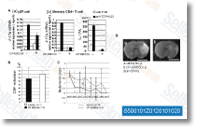
|
|
| S4157 | Chloroquine diphosphate | Chloroquine diphosphate is a 4-aminoquinoline anti-malarial and anti-rheumatoid agent, also acting as an ATM activator. Chloroquine is also an inhibitor of toll-like receptors (TLRs). |
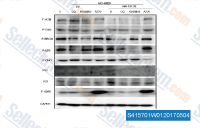
|
|
| S4430 | Hydroxychloroquine (HCQ) Sulfate | Hydroxychloroquine (HCQ) Sulfate is an antimalarial agent used for the treatment of systemic lupus erythematosus, rheumatoid arthritis and other autoimmune, inflammatory and dermatologic conditions. Also acts as an inhibitor of autophagy and toll-like receptor (TLR) 7/9. |
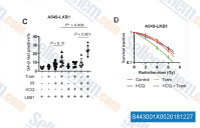
|
|
| S4592 | SBE-β-CD | SBE-β-CD is a novel, chemically modified cyclodextrin with a structure designed to optimize the solubility and stability of drugs. | ||
| S2264 | Artemether | Artemether (SM-224, CGP 56696) is an antimalarial for the treatment of resistant strains of falciparum malaria. |
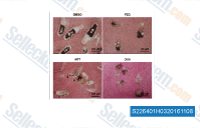
|
|
| S2572 | Streptomycin sulfate | Streptomycin sulfate(Phytomycin) is a sulfate salt of streptomycin that is a protein synthesis inhibitor. | ||
| S7465 | FTI 277 HCl | FTI 277 HCl is a potent and selective farnesyltransferase (FTase) inhibitor with IC50 of 500 pM, about 100-fold selectivity over the closely related GGTase I. This compound inhibits cell growth and induces apoptosis. This chemical is effective in clearing HDV viremia. |
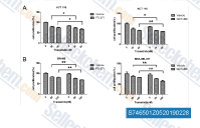
|
|
| S2479 | Lincomycin HCl | Lincomycin hydrochloride (Lincocin, NSC 70731,U10149A) is the monohydrated salt of lincomycin, a substance produced by the growth of a member of the lincolnensis group of Streptomyces lincolnensis. | ||
| S1282 | Artemisinin | Artemisinin is a sesquiterpene endoperoxide which is a potent antimalarial agent. | ||
| S3649 | Ceftazidime | Ceftazidime(GR20263) is a third-generation cephalosporin that has activity against Gram-negative bacilli, including Pseudomonas aeruginosa. | ||
| S3941 | Pinocembrin | Pinocembrin (Dihydrochrysin, Galangin flavanone, 5,7-Dihydroxyflavanone) is a major flavonoid molecule incorporated as multifunctional in the pharmaceutical industry. Its vast range of pharmacological activities has been well researched including antimicrobial, anti-inflammatory, antioxidant, and anticancer activities. | ||
| S5184 | Dexamethasone palmitate | Dexamethasone palmitate (DXP), a lipophilic prodrug of Dexamethasone (DXM), is a glucocorticoid receptor agonist with a 47-fold lower affinity for the glucocorticoid receptor than DXM. This compound exhibits anti-inflammatory activity. | ||
| S9131 | Punicalagin | Punicalagin, a major ellagitannin found in pomegranate extracts, has been shown to have antioxidant, anti-inflammatory, and anticancer effects., This compound, a major ellagitannin found in pomegranate extracts, has been shown to have antioxidant, anti-inflammatory, and anticancer effects. | ||
| E0206 | Ginkgetin |
Ginkgetin is a biflavone from Ginkgo biloba leaves with anti-cancer, anti-inflammatory, anti-microbial, anti-adipogenic, and neuroprotective activities. |
||
| S7867 | Oleuropein | Oleuropein is an antioxidant polyphenol isolated from olive leaf. It exerts antioxidant, anti-inflammatory and anti-atherogenic effects and suppresses the adipocyte differentiation in vitro. This compound inhibits PPARγ activity. It exerts anti-adipogenic effect through direct inhibition of PPARγ transcriptional activity. This chemical also inhibits aromatase. It induces apoptosis. Phase 2. | ||
| S3220 | Trigonelline | Trigonelline (Trigenolline) is a plant alkaloid and a major component of coffee and fenugreek with anti-degranulation, anti-diabetic, antioxidant, anti-inflammatory, and neuroprotective effects. This compound inhibits FcεRI-mediated intracellular signaling pathways, such as phosphorylation of PLCγ1, PI3K, and Akt. It also inhibits the microtubule formation in RBL-2H3 cells. | ||
| E0524 | Spinosad | Spinosad, a mixture of spinosyns A and D known as fermentation products of a soil actinomycete, is a biological neurotoxic insecticide with a broader action spectrum, targeting the nicotinic acetylcholine receptor (nAChRs) of the insect nervous system. | ||
| S8279 | (±)-Shikonin | (±)-Shikonin, a potent and specific Pyruvate kinase M2 (PKM2) inhibitor, is a major component of zicao (purple gromwell, the dried root of Lithospermum erythrorhizon), a Chinese herbal medicine with various biological activities. It is also an inhibitor of TMEM16A chloride channel activity using cell-based fluorescent-quenching assay. Shikonin exerts an anti-inflammatory effect by inhibiting tumor necrosis factor-α (TNF-α) and prevents activation of nuclear factor-κB (NF-κB) pathway via proteasome inhibition. | ||
| E3107 | Andrographis Herba Extract | Andrographis Herba Extract is obtained from the aerial part of Andrographis paniculata (Burm. F.) Nees, has various activities including antimicrobial and antioxidant, antimalarial, antiangiogenic, anti-inflammatory, anti-diabetic, and in vitro α-glucosidase and α-amylase enzyme inhibitory activities. | ||
| S6136 | (±)-α-Bisabolol | α-bisabolol is a small, plant-derived, oily sesquiterpene alcohol with some anti-inflammatory and even anti-microbial properties. | ||
| S6185 | Arachidonic acid | Arachidonic acid (Arachidonate) is an unsaturated, essential fatty acid found in animal and human fat as well as in the liver, brain, and glandular organs. It is a precursor in the biosynthesis of prostaglandins, thromboxanes, and leukotrienes., | ||
| S6243 | Ethyl pyruvate | Ethyl pyruvate (CTI-01) is a simple aliphatic ester of pyruvic acid and has been shown to have robust neuroprotective effects via its anti-inflammatory, anti-oxidative, and anti-apoptotic functions. | ||
| S8068 | Chaetocin | Chaetocin, a natural product from Chaetomium species, is a histone methyltransferase inhibitor with IC50 of 0.8 μM, 2.5 μM and 3 μM for dSU(VAR)3-9, mouse G9a and Neurospora crassa DIM5, respectively. Chaetocin is an anticancer agent and inhibitor of thioredoxin reductase (TrxR). | ||
| S9084 | Rhoifolin | Rhoifolin (Rhoifoloside, Apigenin 7-O-neohesperidoside, Apigenin-7-O-rhamnoglucoside), a natural glycoside of apigenin, has been obtained from the green leaves of Rhus succedanea and possesses a variety of significant biological activities including antioxidant, anti-inflammatory, antimicrobial, hepatoprotective and anticancer effects. | ||
| E3695 | Hypericum japonicum Extract | Hypericum Japonicum Extract is obtained from the entire herb of Hypericum japonicum, has been widely used for the treatment of bacterial diseases, infectious hepatitis, acute and chronic hepatitis, gastrointestinal disorder, internal hemorrhage and tumour. | ||
| E2665 | Tafenoquine | Tafenoquine (WR 238605) is an 8-aminoquinoline, used as an anti-malarial prophylactic agent. | ||
| S9112 | Kaempferitrin | Kaempferitrin (Lespenefril, Lespedin, Lespenephryl, Kaempferol 3,7-dirhamnoside), isolated from the leaves of Hedyotis verticillata and from Onychium japonicum, has antimicrobial, antioxidant, and anti-inflammatory activities. | ||
| S9113 | Ononin | Ononin (Formononetin glucoside, Formononetin 7-O-glucoside) is an isoflavone glycoside with anti-inflammtory effects. | ||
| S4678 | Povidone iodine | Povidone iodine (Betadine, PVP iodine, PVP-I, Isodine) is a stable chemical complex of polyvinylpyrrolidone (povidone, PVP) and elemental iodine. This compound displays excellent antibacterial activity against MRSA and MSSA strains with MICs of 31.25 mg/L and 7.82 mg/L, respectively. It is used as a topical antiseptic in surgery and for skin and mucous membrane infections, as well as as an aerosol. | ||
| E3772 | Eyebright Extract | Eyebright Extract is extracted from Herba Euphrasiae (Scrophulariaceae), which includes anti-inflammatory, antioxidant, antimicrobial, anticancer, antifungal, antiviral, hypotensive, hapatoprotector, anti-epileptic, and anti-catarrhal activities. | ||
| S3261 | Myrislignan | Myrislignan, a lignan isolated from Myristica fragrans Houtt, possesses anti-inflammatory activities. This compound inhibits interleukin-6 (IL-6) and tumour necrosis factor-α (TNF-α). It significantly inhibits the expressions of inducible NO synthase (iNOS) and cyclooxygenase-2 (COX-2) dose-dependently in LPS-stimulated macrophage cells. It also inhibits the NF-κB signalling pathway activation. | ||
| S9560 | Anisodamine Hydrobromide | Anisodamine (6-Hydroxyhyoscyamine) is a naturally occurring atropine derivative and exhibits anti-inflammatory activity. It also inhibits α1-adrenergic receptors and muscarinic acetylcholine receptors (mAChRs). | ||
| S1553 | Delafloxacin (ABT-492) | Delafloxacin (ABT-492, RX-3341, WQ-3034) is a new fluoroquinolone against 155 aerobic and 171 anaerobic pathogens. | ||
| S5927 | Proguanil | Proguanil (chlorguanide, chloroguanide) is a prophylactic antimalarial drug. It inhibits the dihydrofolate reductase of plasmodia and thereby blocks the biosynthesis of purines and pyrimidines, which are essential for DNA synthesis and cell multiplication. | ||
| S3226 | Dehydroabietic acid | Dehydroabietic acid (DAA, DHAA), a naturally occurring diterpene resin acid derived from coniferous plants such as Pinus and Picea, displays anti-inflammatory activity via suppression of Src-, Syk-, and TAK1-mediated pathways. | ||
| S4945 | Ethacridine lactate | Ethacridine lactate (Acrinol) is an aromatic organic compound based on acridine used as an antiseptic agent. This compound is also a poly(ADP-ribose) glycohydrolase (PARG) inhibitor. | ||
| S3308 | Caftaric acid | Caftaric acid (CA, Caffeoyl tartaric acid) is a natural product that shows anti-oxidant and anti-inflammatory effects. | ||
| S4946 | 2,3-Dihydroxybenzoic acid | 2,3-Dihydroxybenzoic acid (Pyrocatechuic acid, 3-Hydroxysalicylic acid, Hypogallic acid) is a natural phenol found in Phyllanthus acidus and in the aquatic fern Salvinia molesta, also a product of human aspirin metabolism. It is a potentially useful iron-chelating drug and has antimicrobial properties. | ||
| E0626 | AX 20017 | AX 20017 is a small-molecule protein kinase G (PknG) inhibitor with an IC50 of 0.39 μM. | ||
| S4303 | 9-Aminoacridine | 9-Aminoacridine (Aminacrine) is a highly fluorescent dye used clinically as a topical antiseptic and experimentally as a mutagen, an intracellular pH indicator and a negative mode small molecule MALDI matrix. | ||
| S4417 | Ceftaroline Fosamil | Ceftaroline fosamil (CX-0903, DSP-5990, PPI-0903, TAK-599, Teflaro, Zinforo) is a cephalosporin with activity against Gram-positive pathogens, including methicillin-resistant Staphylococcus aureus (MRSA). |
||
| S0846 | Euquinine | Euquinine is generally used as a febrifuge, antimalarial, and tonic. | ||
| S6771 | MAC-545496 | MAC-545496 is a nanomolar glycopeptide-resistance-associated protein R(GraR) inhibitor with strong binding affinity to the full-length GraR protein (Kd ≤ 0.1 nM). This compound can reverse β-lactam resistance in methicillin-resistant strains and synergize with CAMPs. It shows remarkable activity in macrophages and attenuates S. aureus virulence in a G. mellonella larvae infection model. | ||
| S3711 | Carbasalate Calcium | Carbasalate calcium (Iromin, Alcacyl, Omegin, Rheomin, Solupsan) is an analgesic, antipyretic, and anti-inflammatory drug as well as a platelet aggregation inhibitor. | ||
| E1126 | AFN-1252 | AFN-1252 (Debio 1452) is a potent inhibitor of enoyl-acyl carrier protein reductase (FabI), inhibits all clinical isolates of Staphylococcus aureus and Staphylococcus epidermidis at concentrations of ≤0.12 μg/ml. | ||
| E1421 | A2ti-1 | A2ti-1 is a selective and high-affinity inhibitor of annexin A2/S100A10 heterotetramer (A2t) with IC50 of 24 μM. This compound specifically disrupts the protein-protein interaction (PPI) between A2 and S100A10. It also prevents human papillomavirus type 16 (HPV16) infection. | ||
| E7151 | Mephenytoin | Mephenytoin is an antiepileptic drug, can be used as a probe for the estimation of the metabolic activities of CYP2B6 and CYP2C19. It can be used in antimalarial research. | ||
| S9341 | 3,4-Dimethoxycinnamic acid | 3,4-Dimethoxycinnamic acid (Caffeic acid dimethyl ether) is a bioavailable coffee component as a perspective anti-prion compound and bind potently to prion protein with a Kd of 405 nM. | ||
| S4515 | Ademetionine disulfate tosylate | Ademetionine Disulfate Tosylate is the disulfate-tosylate mixed salt of a mixture of diastereoisomers of the ademetionine ions. Ademetionine possesses anti-inflammatory activity and has been used in treatment of chronic liver disease. | ||
| S6802 | Etosalamide | Etosalamide (Ethosalamide) is an anti-inflammatory drug with antipyretic and analgesics properties. | ||
| E0516 | Nequinate | Nequinate, a quinoline compound, is an anticoccidial agent against cecal coccidiosis (Eimeria tenella) infections, also inhibits xanthine oxidoreductase (XOD) activity.This product has poor solubility, animal experiments are available, cell experiments please choose carefully! | ||
| E1436 | A2ti-2 | A2ti-2 is a selective and low-affinity inhibitor of annexin A2/S100A10 heterotetramer (A2t)with an IC50 of 230 μM. It specifically disrupts the protein-protein interaction (PPI) between A2 and S100A10 and also prevents human papillomavirus type 16 (HPV16) infection. | ||
| S1958 | Sulbactam | Sulbactam(CP45899) is a beta-lactamase inhibitor with an average IC50 of 0.8 μM. | ||
| S5001 | Tofacitinib (CP-690550) Citrate | Tofacitinib citrate (CP-690550, Tasocitinib) is a novel JAK inhibitor with IC50 of 1 nM, 20 nM and 112 nM against JAK3, JAK2, and JAK1, respectively. It also has anti-infection activity. |

|
|
| S4157 | Chloroquine diphosphate | Chloroquine diphosphate is a 4-aminoquinoline anti-malarial and anti-rheumatoid agent, also acting as an ATM activator. Chloroquine is also an inhibitor of toll-like receptors (TLRs). |

|
|
| S4430 | Hydroxychloroquine (HCQ) Sulfate | Hydroxychloroquine (HCQ) Sulfate is an antimalarial agent used for the treatment of systemic lupus erythematosus, rheumatoid arthritis and other autoimmune, inflammatory and dermatologic conditions. Also acts as an inhibitor of autophagy and toll-like receptor (TLR) 7/9. |

|
|
| S2572 | Streptomycin sulfate | Streptomycin sulfate(Phytomycin) is a sulfate salt of streptomycin that is a protein synthesis inhibitor. | ||
| S7465 | FTI 277 HCl | FTI 277 HCl is a potent and selective farnesyltransferase (FTase) inhibitor with IC50 of 500 pM, about 100-fold selectivity over the closely related GGTase I. This compound inhibits cell growth and induces apoptosis. This chemical is effective in clearing HDV viremia. |

|
|
| S5184 | Dexamethasone palmitate | Dexamethasone palmitate (DXP), a lipophilic prodrug of Dexamethasone (DXM), is a glucocorticoid receptor agonist with a 47-fold lower affinity for the glucocorticoid receptor than DXM. This compound exhibits anti-inflammatory activity. | ||
| E0206 | Ginkgetin | Ginkgetin is a biflavone from Ginkgo biloba leaves with anti-cancer, anti-inflammatory, anti-microbial, anti-adipogenic, and neuroprotective activities. |
||
| S7867 | Oleuropein | Oleuropein is an antioxidant polyphenol isolated from olive leaf. It exerts antioxidant, anti-inflammatory and anti-atherogenic effects and suppresses the adipocyte differentiation in vitro. This compound inhibits PPARγ activity. It exerts anti-adipogenic effect through direct inhibition of PPARγ transcriptional activity. This chemical also inhibits aromatase. It induces apoptosis. Phase 2. | ||
| S8279 | (±)-Shikonin | (±)-Shikonin, a potent and specific Pyruvate kinase M2 (PKM2) inhibitor, is a major component of zicao (purple gromwell, the dried root of Lithospermum erythrorhizon), a Chinese herbal medicine with various biological activities. It is also an inhibitor of TMEM16A chloride channel activity using cell-based fluorescent-quenching assay. Shikonin exerts an anti-inflammatory effect by inhibiting tumor necrosis factor-α (TNF-α) and prevents activation of nuclear factor-κB (NF-κB) pathway via proteasome inhibition. | ||
| S8068 | Chaetocin | Chaetocin, a natural product from Chaetomium species, is a histone methyltransferase inhibitor with IC50 of 0.8 μM, 2.5 μM and 3 μM for dSU(VAR)3-9, mouse G9a and Neurospora crassa DIM5, respectively. Chaetocin is an anticancer agent and inhibitor of thioredoxin reductase (TrxR). | ||
| S3261 | Myrislignan | Myrislignan, a lignan isolated from Myristica fragrans Houtt, possesses anti-inflammatory activities. This compound inhibits interleukin-6 (IL-6) and tumour necrosis factor-α (TNF-α). It significantly inhibits the expressions of inducible NO synthase (iNOS) and cyclooxygenase-2 (COX-2) dose-dependently in LPS-stimulated macrophage cells. It also inhibits the NF-κB signalling pathway activation. | ||
| E4872 | Mefloquine | Mefloquine(Lariam, WR-142490) is a quinoline antimalarial drug and an antagonist of K+ channel (KvQT1/minK) with an IC50 of ~1 μM. It is widely used in both the treatment and prophylaxis of Plasmodium falciparum malaria, and can prolong cardiac repolarization. | ||
| S3279 | Polyphyllin B (Formosanin C) | Polyphyllin B (Formosanin C, FC), a diosgenin saponin isolated from Paris formosana, is an immunomodulator with antitumor activity. This compound induces apoptosis. | ||
| S3269 | Acetylcorynoline | Acetylcorynoline, a major alkaloid component derived from Corydalis bungeana which is a traditional Chinese medical herb, shows anti-inflammatory properties. This compound may decrease egl-1 expression to suppress apoptosis pathways and increase rpn5 expression to enhance the activity of proteasomes. | ||
| S3270 | Genipin 1-O-beta-D-gentiobioside | Genipin 1-O-beta-D-gentiobioside (GG, Genipin 1-β-D-gentiobioside, Genipin 1-gentiobioside, Genipin 1-β-gentiobioside, Genipin gentiobioside) is a bioactive iridoid glycoside isolated from Gardenia jasminoides Ellis (Zhizi in Chinese) that exhibits hepatoprotective, anti-inflammatory, antioxidant, and antithrombotic activities. | ||
| E8272New | Dihydroarteannuin B | Dihydroarteannuin B is a cadinane sesquiterpene isolated from the dried leaves of Artemisia annua acts as a microbial metabolite of arteannuin B. It can be used in research for developing malaria treatments. |






































